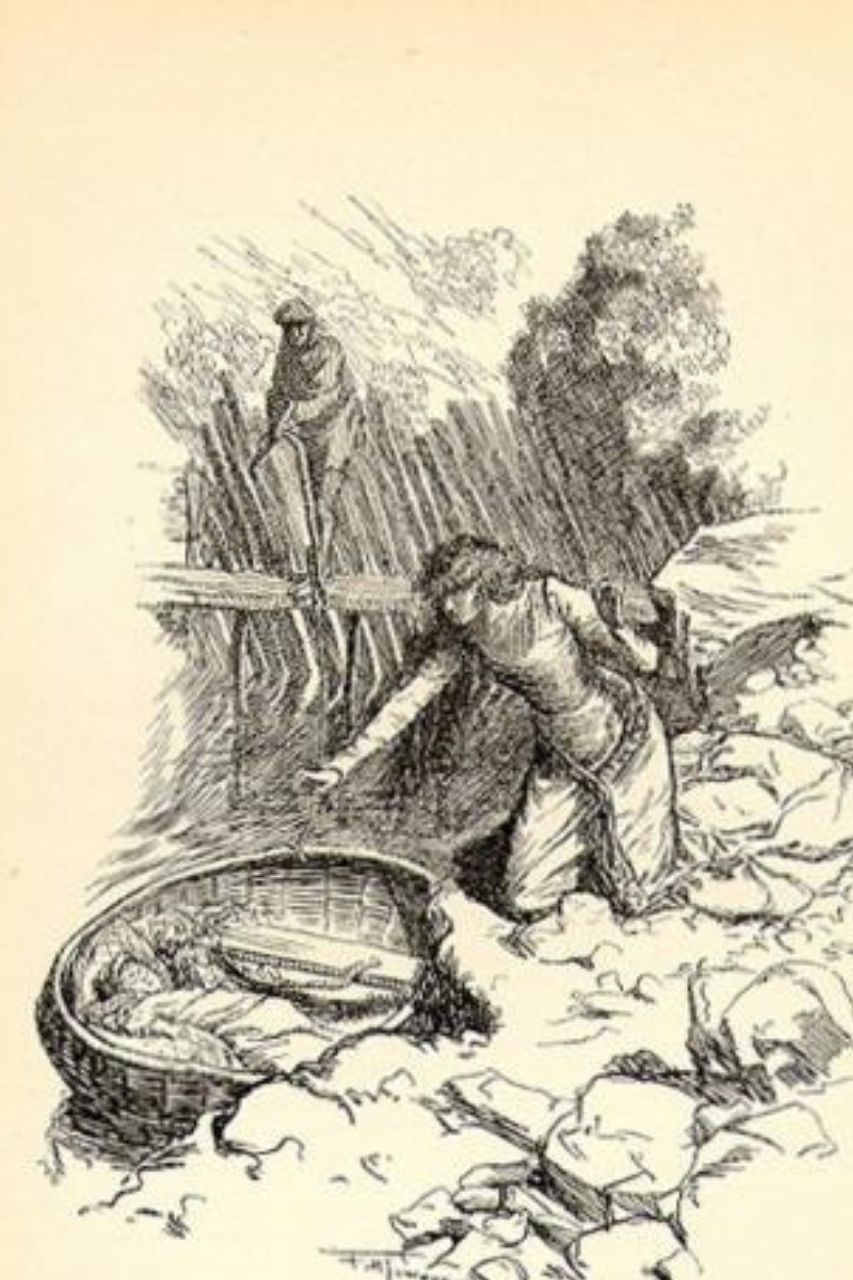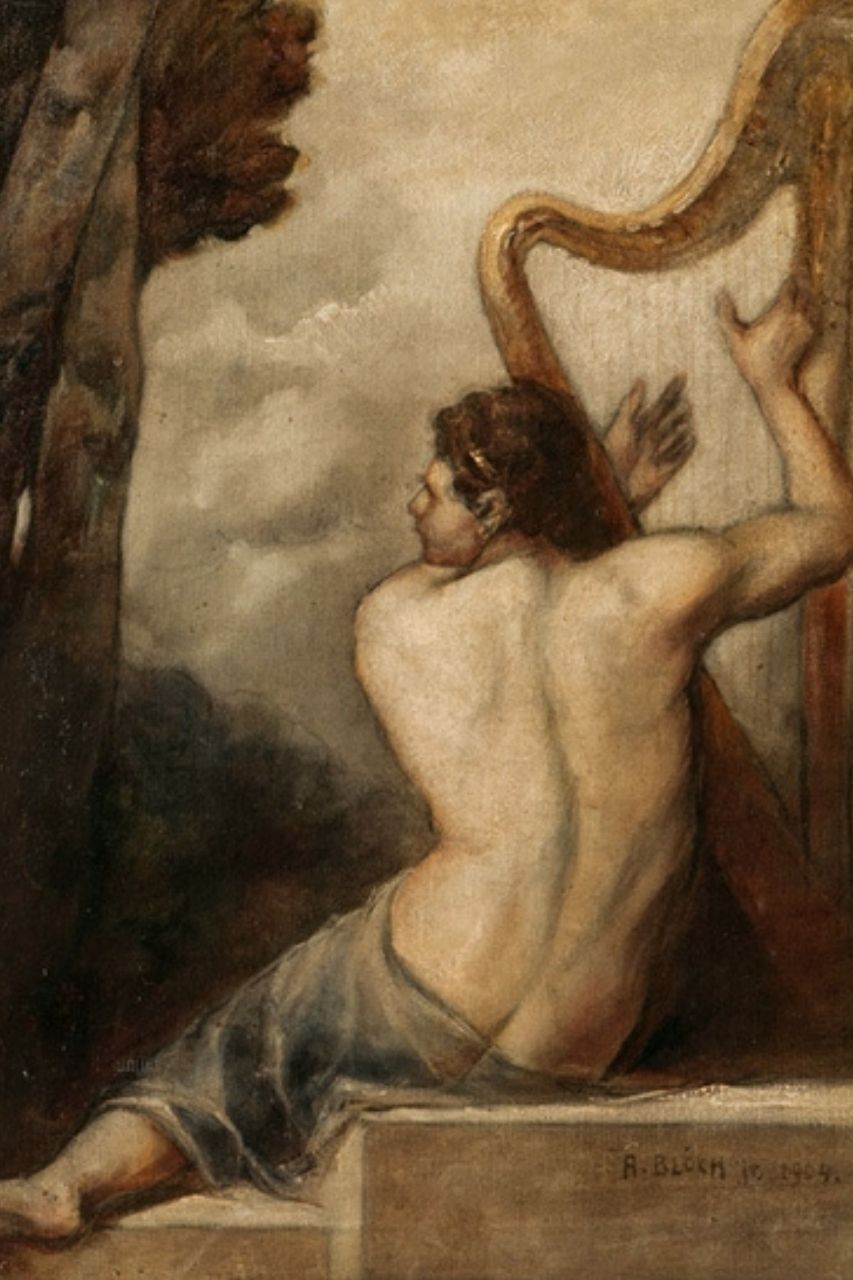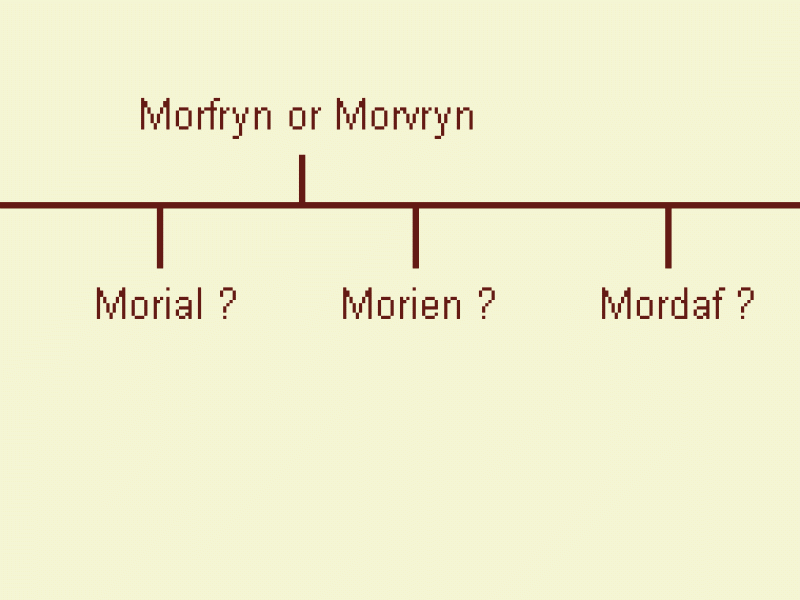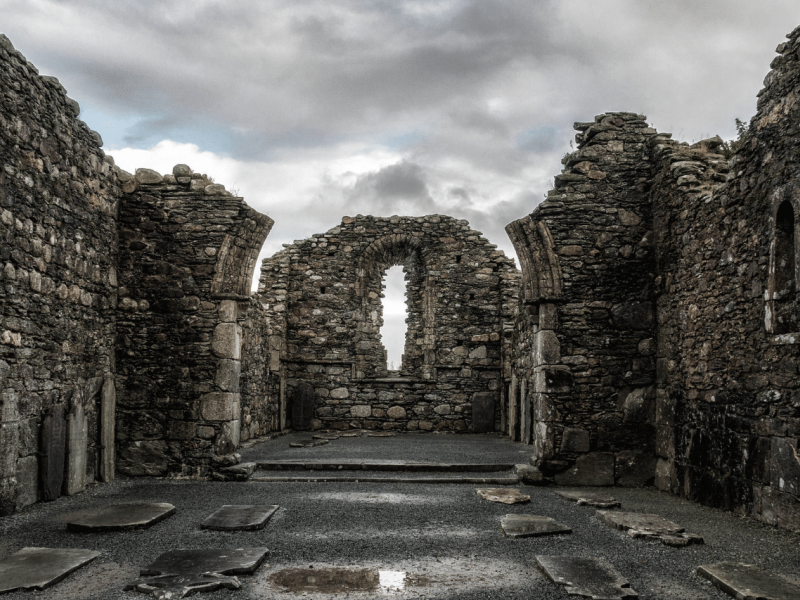Taliesin
Taliesin: Myth of the Beautiful Bard
Taliesin, poet, and bard, is the famed Welsh advisor and “entertainer” to the kings of yore. It’s not clear whether Taliesin was a myth, but there was a real Taliesin who lived during the 6th century. He was beautiful, prophetic, and poetic, and he had a long and successful career. Learn more about how Taliesin found his beginning, and he made his mark on the Celtic world here.
Who Was Taliesin in Celtic Mythology?
According to the records, Taliesin was likely a real man. He had myths and stories told about him, nearly elevating him to mythical status. His name in Welsh means “radiant brow,” which suited him because he was said to have great beauty. His beauty came from the white witch Ceridwen who endowed him with the powers of Awan.
Not only was he beautiful, but he could also look into the future, so he was an advisor of kings. Many kings of great courts sought him out as an advisor. He had offers from the Briton, Saxon, and Roman courts, asking if he would come and provide his services as prophesier and advisor. In his time, he served three British kings, and he even served King Arthur.
That’s why there is some curiosity about whether Taliesin was actually Merlin or if Merlin inspired him. They both had magical powers to some extent. Some scholars believe they were the same person and might even use the names interchangeably. Either way, he traveled alongside famed kings.
He also acted as both their companion and advisor. He has gone down in history as the chief of bards.
Taliesin’s Origin: The Bard and His Beginning
Taliesin had a strange beginning, and it had everything to do with magic if we’re to believe the story, “The Tale of Taliesin.” Before Taliesin became Taliesin, he was somebody else, and his name was Gwion Bach ap Gwreang. The white witch Ceridwen could create a special potion that would give others both beauty and the power of prophecy. But the potion would take a long time to brew, and Ceridwen needed help to guard it while she went about her business.
She asked Gwion and another to guard the potion, keeping it stirring and making sure no one took any. Ceridwen’s potions were potent, however. All one person needed in order to gain Ceridwen’s magical gifts was three drops of the potion. One drop made one beautiful, and the other drop made one wise and the other witty.
Gwion got lucky, and while he was stirring the cauldron, he got three drops on his thumb. They burned him, so he put the thumb in his mouth to cool it down, and then he was gifted with Awan. That is the Welsh term for poetic inspiration. Ceridwen found out what had happened, and she dropped everything and chased after the young man she’d trusted to help her, and Taliesin was born.
The Magical Chase, Ending in Rebirth
Now that Gwion could perform magic, he could hide from the witch by changing himself into different animals as he ran. She found him at each turn, and he needed to think of a brilliant solution. In the last effort to escape her, he turned himself into a piece of grain, and Ceridwen ended up eating him. After that, Ceridwen became pregnant with Gwion himself!
When she had the child, she couldn’t find it in her heart to be angry at him anymore. And he was so beautiful, but she didn’t keep him. She gave him to be fostered by the lord of Ceredigion, Elfin. His father named the boy Taliesin and raised him as his son.
Taliesin’s Myth: First Prophecy and Beyond
One of Taliesin’s stories involves his first prophecy, and it, unfortunately, wasn’t for the better for the recipient. Taliesin’s father, Elfin, took him along on a trip to visit Elfin’s rival, the King of the Britons. High King Maelgwn Gwynned had to be the first recipient of Taliesin’s prophetic ability. During the man’s court visit, Taliesin told the king that he would eventually die of Yellow Fever instead of dying in battle.
King Maelgyn Gwynned did die of Yellow Fever just as Taliesin predicted, and thus Taliesin’s fame grew. He became more and more well-known as time went on. He advised his foster father, and then he worked for various kings over time. In certain tales, such as “Culhwch” and “Olwen,” he worked as a bard in King Arthur’s Court.
He traveled with the king, acted as his companion, magician, and advisor. He played many roles, similar to the famed Merlin in the stories of King Arthur. Stories of Taliesin’s involvement with King Arthur emerged around the 11th century.
Taliesin in History
Taliesin, bard, and advisor, was also a historical figure who lived in the 6th century. Many poems are stories that credit him as an author, but scholars cannot be sure that he was the actual author. After he lived, so many things became mixed with the legend that we can’t totally figure out who was who. There was even a “Book of Taliesin” called “Llyfr Taliesin” in Welsh, written around the 14th century.
However, he was already almost a mythical figure by then. There was an ancient Welsh historian named Iolo Morganwg who added a bit more confusion to the mix. In the 18th century, he worked on collecting ancient documents about Taliesin. The tales were so surprising in many ways, and they gained popularity.
But later, in the 19th century, these tales proved to be all made up. So not only did Iolo Morganwg lose his reputation but as a result, Taliesin did as well.
Taliesin and Merlin
Taliesin’s history was very like that of the mythical and mystical Merlin, but in reality, they also had many differences. Perhaps some people use their names interchangeably. And in myths, they were often confused, but they are more often thought of as two separate beings. Merlin was advisor and magician to King Arthur, as was perhaps Taliesin.
They both had the abilities of wisdom, magic, and prophesy.
However, even though Taliesin had a magical background and myth to his name, he was also connected to history and a historical figure. Merlin was a druid and like a half-demon, and he was far more of the fantasy world than his counterpart. There is also some comparison made between Taliesin and Lugh of the Long-Arm.
He was a wise god who was part of King Nuada of the Silver Hand’s court who later became king of the gods. He was older than Taliesin, so some scholars believe he might have inspired some of Taliesin’s more mystical history.
Taliesin in Pop Culture
Taliesin is one of the better-known names in the Celtic mythology world. And he didn’t even really reach godlike status.
He was a character in Alfred Lord Tennyson’s poem, “Idylls of the King.”
He was also a character in the TV show “Merlin.”
Taliesin was a bard in Lloyd Alexander’s “Chronicles of Prydain.”
He was a character in the final book of the “Dark Rising” series written by Susan Cooper.
The composer Martin Romberg wrote a full multi-part piece named “The Book of Taliesin.”
Frank Lloyd Wright named his home and studio “Taliesin.” When he moved into a new home, he named it “Taliesin West.” It was all related to his mother being from Wales.
A singer named Damh the Bard named one of his songs “Ceridwen and Taliesin.”
Taliesin was a bard in the book series “Warlord Chronicles” by Bernard Cornwell.
Conclusion
Taliesin was the most well-known bard in Welsh history. His name became so connected with that of the historical figure that it’s hard to disconnect his real self from his magical, mythical self. But we’ve tried to cover the details as best we can. Take a look at the list of points we’ve gone through in this article:
Taliesin was a bard, companion, advisor, and magician.
He became known as the Chief of Bards or even the Bard of the Britons, one of the courts he worked in.
There was a real Taliesin who lived in the 6th century, but the mythical one had an interesting beginning.
He had great beauty as well as wisdom, and he even had the gift of prophecy.
His name means “radiant brow,” and he was blessed with the Welsh powers of Awan: beauty and wisdom.
Throughout his life, he was always employed. Because of his skills and abilities, the Saxon, Briton, and Roman courts asked him to work as an advisor.
He served three British kings in his time, and one of them was said to be the famous King Arthur.
Some believe that he was either the same as Merlin, King Arthur’s advisor, or at least inspired by him.
Taliesin was twice-born, so sometimes he was called the “twice-born bard.”
He was originally a human young man named Gwion Bach ap Gwreang who was chosen to help the white witch Ceridwen with one of her famous potions.
These potions were brewed in a large cauldron and took about a year to create.
She would make them and bestow them as a gift upon a deserving person. The brew was powerful, and it would give the person who received it beauty, wisdom, and wit.
Only the most deserving could receive it, so Ceridwen set Gwion and another man to guard the cauldron and keep it mixing over the next year.
But there was one strange thing about the brew: it only took three drops to bestow its gift. Any more, and the person could be killed by its power.
Gwion was stirring it, and three drops splashed onto his thumb. It burned him, so he put his thumb into his mouth, and Ceridwen found out just what had happened.
She began to chase Gwion as punishment, but with his new powers, Gwion was able to transform himself into various animals to hide from Ceridwen. In the end, he transformed into a grain of wheat which Ceridwen ate.
Ceridwen later gave birth to him, and he was so beautiful that she realized she couldn’t kill him. She gave him to Lord Elfin to be raised.
Elfin called him Taliesin, and he raised him as his own son. Thus, he was twice-born.
As he grew, his ability to prophesy became known. He prophesied that a famous king would die of Yellow Fever, and once he did, his fame grew.
He worked for various kings through his time, even his own father as well as King Arthur.
The history of the real Taliesin and the mystical one became very closely connected and intertwined.
Part of the reason for all the extra confusion was because of an ancient Welsh historian who compiled multiple manuscripts about Taliesin to put together for a book.
But later, it was discovered that all the stories were made up, so there was a lot of confusion about what was real and historical and what wasn’t.
Merlin and Taliesin are easily confused because of their similarities.
But Merlin was more of fantasy, while Taliesin had a lot of his grounding in real life.
Merlin was a druid and a half-demon. Taliesin was more often portrayed as a man except for his first story when he changed into different animals to escape Ceridwen.
There are also some similarities between Taliesin and Lugh of the Long-Arm.
Taliesin has appeared in many song titles in popular culture, and he often plays a bard or a guide in mythical book series.
Taliesin was similar to other characters in world mythology; he was likely a real man whose skills were so legendary that they turned him into a legend. His story became mixed with that of the ancient Celts and their magic. He had such power and such beauty that it was no wonder he became like an almost god to the Celts. But both characters, whether real or mystical, had a lowly start, and they built themselves up to what they became: powerful and memorable.









